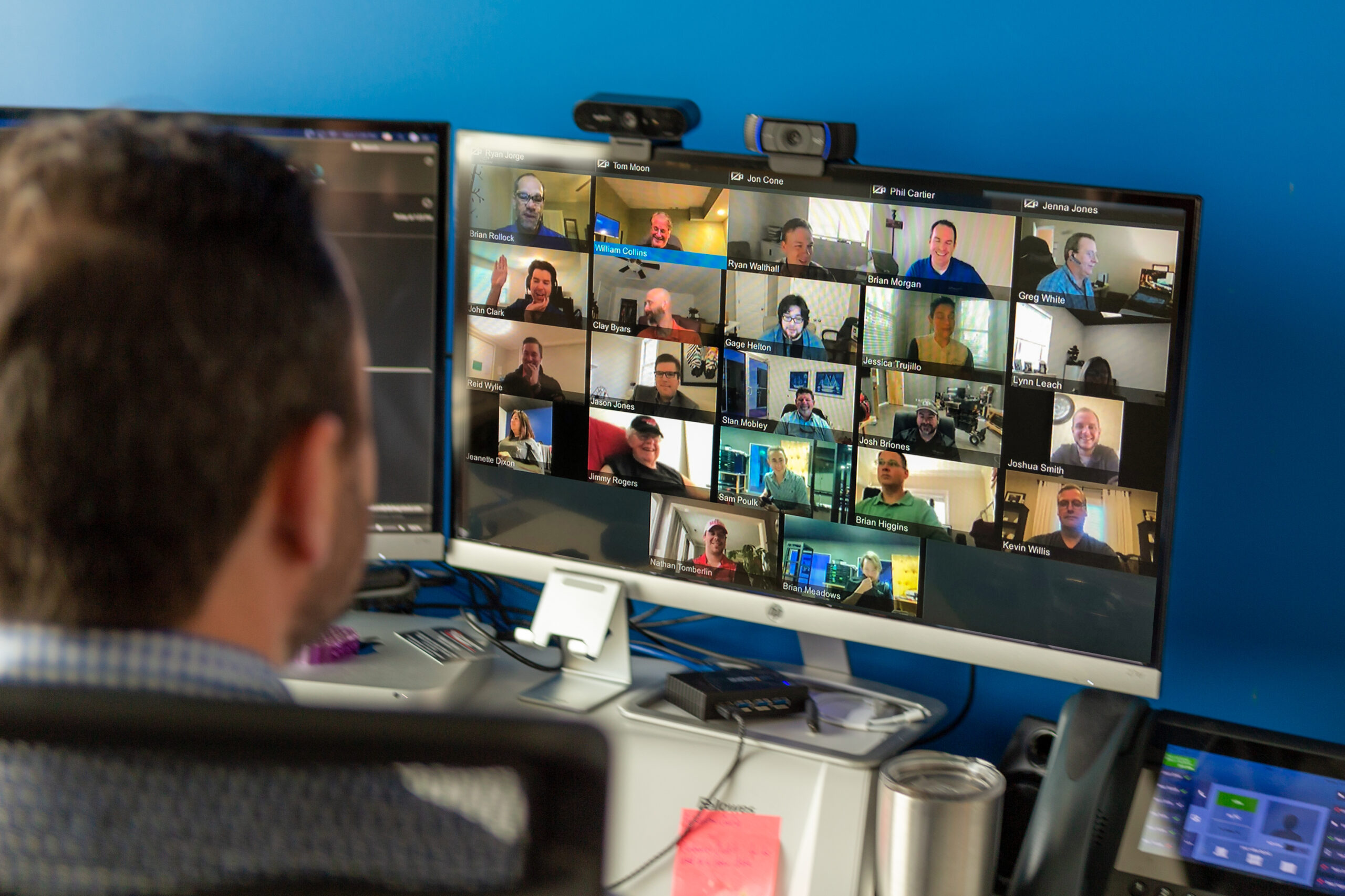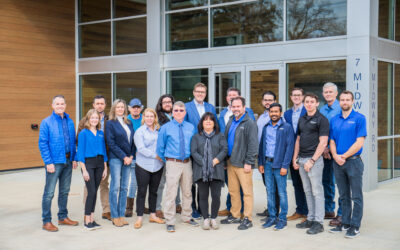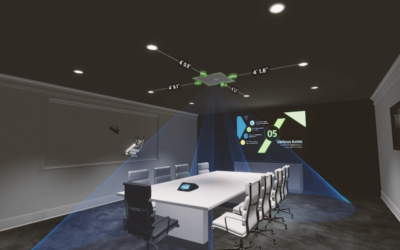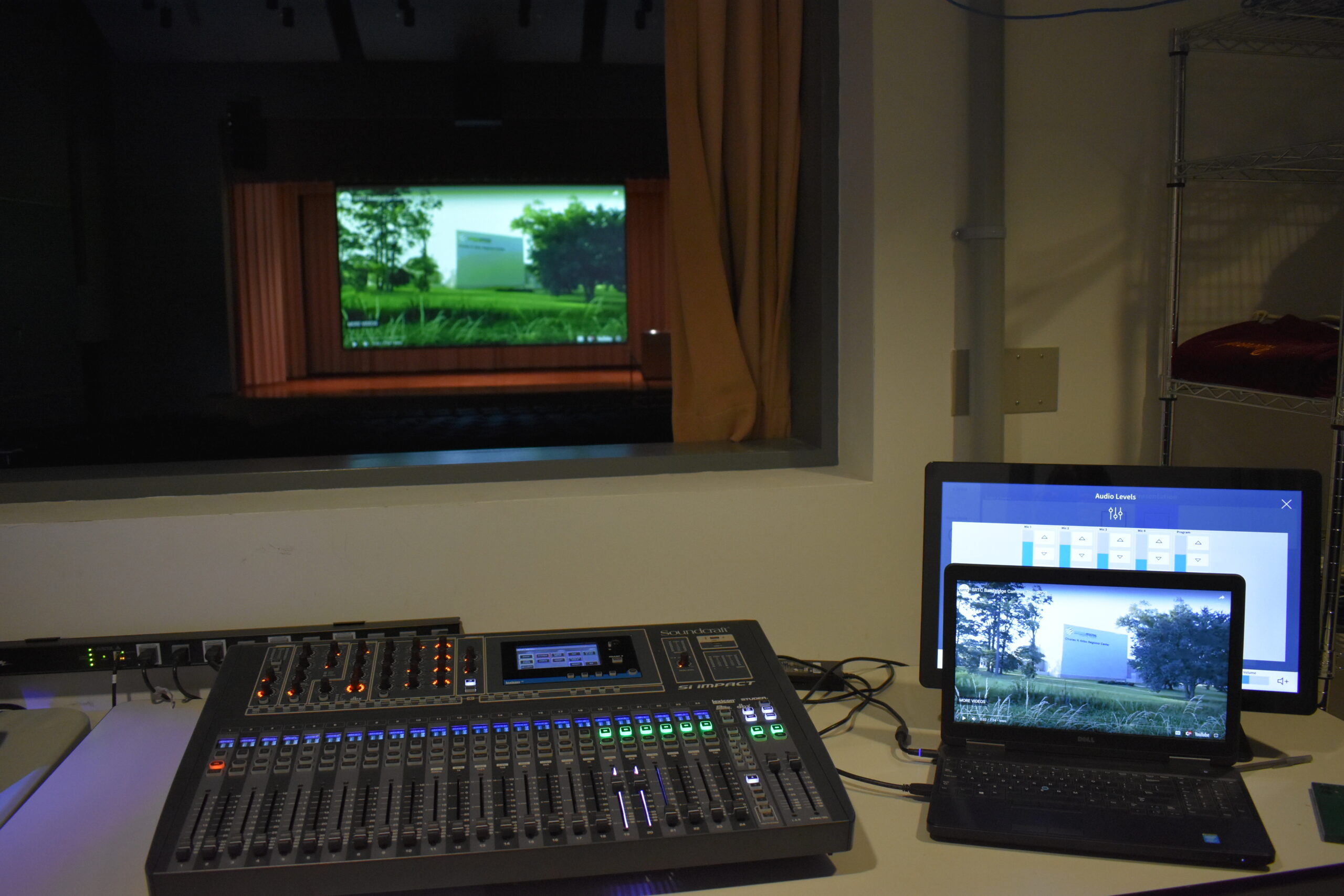In today’s fast-paced and interconnected world, the lines between work and personal life can often blur, leading to increased stress, especially as Q4 closes and we prepare for the new year. However, audio-visual technology has emerged as a powerful tool to help enhance employee wellness and improve work-life balance. In this blog post, we will explore how audio-visual technology is playing a pivotal role in reshaping the modern workplace and contributing to a healthier work-life equilibrium in 2024.
REMOTE WORK AND VIRTUAL COLLABORATION
As we know, the pandemic accelerated the adoption of remote work, with many companies embracing virtual collaboration tools to keep their employees connected. Video conferencing platforms like Zoom and Microsoft Teams have become indispensable for remote teams. These tools enable face-to-face interactions, even when employees are physically distant, fostering a sense of connection and reducing feelings of isolation. This technology has helped employees maintain social bonds and reduce the negative impacts of isolation on their mental health.
Here at S&L, we use Microsoft Teams for virtual collaboration on a daily basis. From meeting with work-from-home employees to collaborating with our employees dispersed across our Georgia and Tennessee locations, videoconferencing capabilities keep us all connected. Our monthly company-wide meetings from our Microsoft Teams rooms eases our communication and makes our meetings run smoothly and efficiently.
FLEXIBLE WORK ARRANGEMENTS
Audio-visual technology has empowered employees to embrace more flexible work arrangements, such as telecommuting or flexible hours. With the ability to attend meetings and complete tasks from home or other remote locations, employees can better tailor their work schedules to accommodate personal responsibilities and commitments. This newfound flexibility contributes significantly to improved work-life balance, reducing stress associated with rigid working hours.
For example, our Account Executives can join video calls while they travel to meetings, site surveys, and attend conferences. While Stan and Amelia attended the GCCA conference in Saint Simons Island, they were still able to join the Sales meetings and update the rest of the team on their week.
VIRTUAL WELLNESS PROGRAMS
Wellness programs have gained traction as people recognize the importance of physical and mental health. Audio-visual technology has made it easier to deliver virtual wellness programs, including yoga and meditation classes, fitness challenges, and mental health workshops. These programs can be accessed from the comfort of one’s home or office, making it more convenient for employees to prioritize self-care and well-being.
Many gyms have been taking advantage of live stream capabilities. We recently helped The Method Rehab and Wellness in Thomasville set up a live stream system so its members can join their workout classes from anywhere!
REMOTE LEARNING AND SKILL DEVELOPMENT
Continuous learning and skill development are essential for career growth and personal fulfillment. Audio-visual technology has expanded access to educational resources, making it easier for employees to engage in remote learning opportunities. Whether it’s attending virtual conferences, taking online courses, or participating in webinars, employees can enhance their skills without the need for extensive travel or time away from their personal lives.
Remote learning in K-12 and Higher Education has seen a huge increase over the past few years. Many schools are adopting the ability to host classes virtually to increase flexibility for students and to have alternatives to closing school for snow days or other emergency weather situations.
ENHANCED COMMUNICATION AND INFORMATION SHARING
Effective communication is key to a healthy work-life balance. Audio-visual technology streamlines communication within organizations, making it easier for employees to stay informed about company updates, goals, and priorities. Additionally, instant messaging and video conferencing tools facilitate quick and efficient exchanges, reducing the need for lengthy email threads and allowing employees to respond to work-related matters more promptly.
Digital signage and virtual assistants have also begun to increase in popularity over the years and improve work-life balance for employees especially in the corporate and education sectors. Digital signage in schools has been crucial for sending out emergency alerts and general announcements, making communication so much easier during stressful situations.
In an era where work-life balance is increasingly recognized as essential for employee well-being and productivity, audio-visual technology has emerged as a valuable ally. By enabling remote work, fostering virtual collaboration, supporting wellness initiatives, and enhancing communication, audio-visual technology empowers employees to strike a better balance between their personal and professional lives. As businesses continue to adapt to the changing landscape of work, embracing these technologies will become even more crucial in promoting employee wellness and work-life harmony. The future of work is undoubtedly digital, and with the right application of audio-visual technology, it can be a future that benefits both employees and organizations alike.




